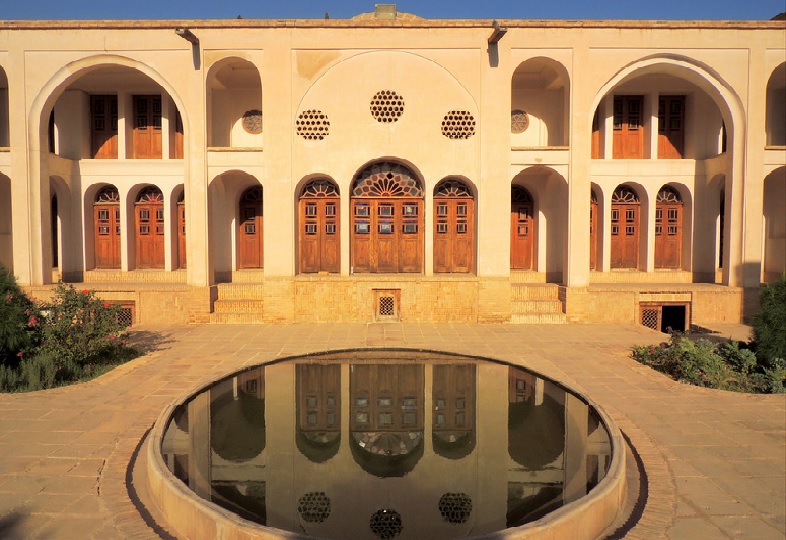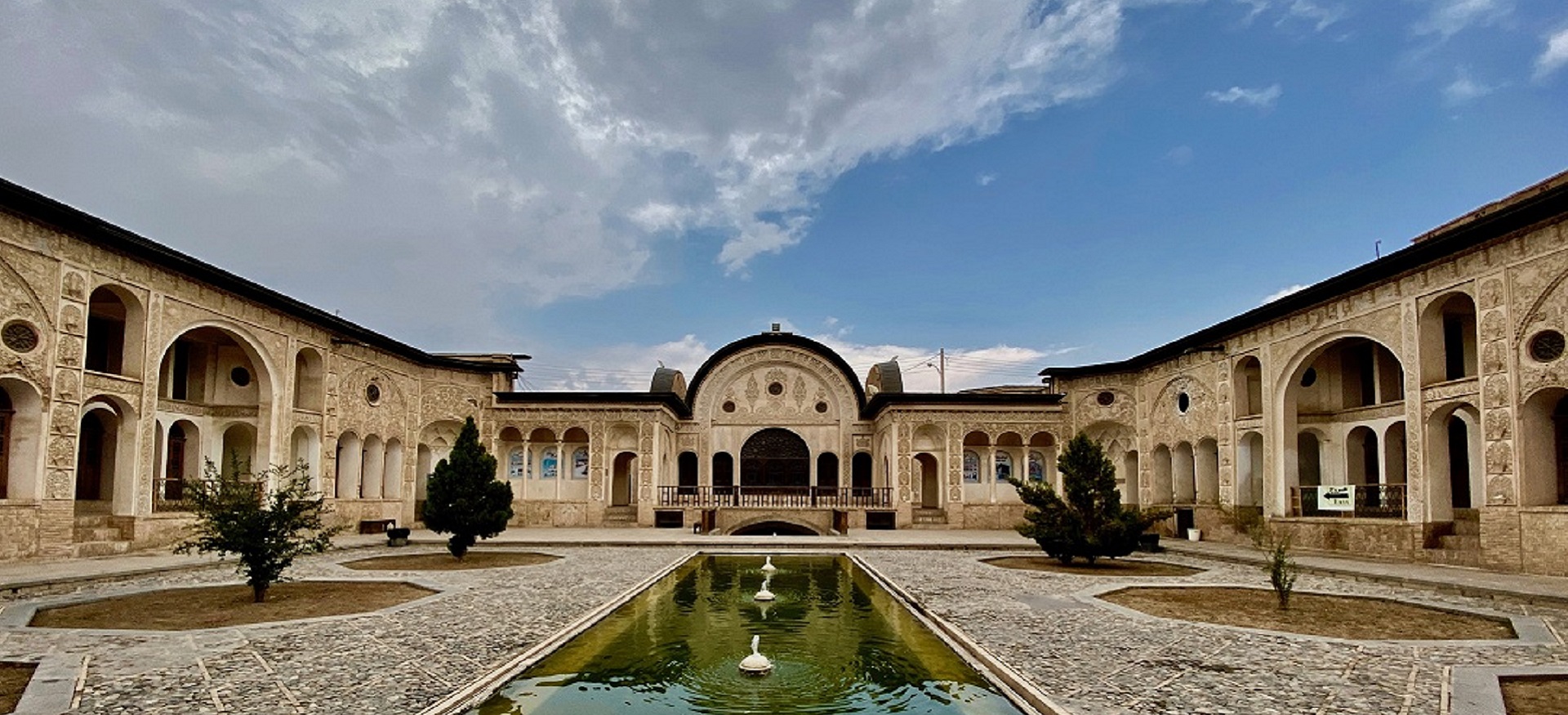
Tabatabaei Historical House (Kashan, Iran)
It is not possible that you know Kashan and haven’t heard about Tabatabaei House (Tabatabai House). This house is called the paradise of Persian houses. It has so much artistic taste and elegance that amazes everyone. This house is one of the main tourist attractions in Kashan and always attracts many tourists. The main reputation of Tabatabaei House is due to the special details and delicacies used in its design and construction. The use of special decorations, plaster work, paintings, mirror work and colored glass have created singular views. All of these beauties can convince you to plan a fascinating and memorable trip to Kashan. Interested? Stay with me on this post to discover more about it.
Contents
- 1 Why Tabatabaei Historical House?
- 2 History of Tabatabaei House
- 3 The architecture of Tabatabaei House
- 4 The Alcove of Tabatabaei Historical House
- 5 The Mirror Iwan – Tabatabaei House
- 6 Winter and Summer Rooms in Tabatabaei Historical House
- 7 More about Tabatabaei House
- 8 Like to see Tabatabaei House?
- 9 Tabatabaei Historical House Tour
- 10 Tabatabaei Historical House on Map

Tabatabai Historical House
Why Tabatabaei Historical House?
- Tabatabaei House is one of the valuable and famous houses in Iran where people can see the elements of Persian architecture.
- The design, architecture and decorations of this building are unique and have been done by the best masters of Iran.
- Tabatabaei historical house is located in a historical neighborhood and besides visiting it, you can also visit other monuments.

Inside Tabatabai House Kashan
History of Tabatabaei House
The owner of Tabatabaei House was a Qajar-era international carpet trader. He exported carpets to Russia and India. His family name was Tabatabai and that’s the reason of naming the house as Tabatabaei House. He chose a famous architect, who was a prominent artist of Qajar era, to design and build this house. And it took 10 years for him to build the house. As mentioned, Tabatabai was a carpet trader and that’s why all the plasterwork used in the building are like Persian carpet patterns. This has made the architecture and art used in this house significantly ingenious and modern.

The facade of Tabatabai House
The architecture of Tabatabaei House
Like other historical buildings of that time, Tabatabaei House has its architecture and design in accordance with the specific culture and climate of the region. The house is symmetrical and is one floor below the ground level. This method, called Sunken Courtyard, is a common method in the architecture of desert houses. It protects the houses from heat and earthquakes and facilitates access to qanat water and ground moisture.
Tabatabaei House has 5 entrances, although now only the main one can be used. The entrance to the house is relatively small and at first, you don’t expect to see such a large building. After entering through the main door, you reach a winding passage at the end of which there is a hashti (entrance hall). When you go down the stairs, you can see a spacious and stunning courtyard with a large pool. There are 6 octagonal gardens full of flowers on both sides of the large pool that increase the freshness of the courtyard. The alcove is also located in this part of the house.
Tabatabaei House consists of three parts: interior, exterior, and a special part for the servants. This house has 40 rooms, 4 courtyards, 4 cellars, 3 wind catchers, and 2 qanats. The interior part is larger than the exterior part and has a square courtyard that has been used for ceremonies such as Nowruz and religious ceremonies. The interior consists of a five-door room in the center with two courtyards on two sides and cellars. This room was a place for receiving private guests and relatives. Below the interior, there is one of the cellars. In addition to the interior and exterior, there is also a part for the servants. It includes a kitchen, a courtyard, several rooms and a cellar.

The ceiling of Tabatabai House
The Alcove of Tabatabaei Historical House
In the southern part of the house, there is the most attractive part called the alcove. This alcove has a tall roof and seven doors. It was used for parties, celebrations, and hosting businessmen and guests who were invited for trading. The decorations of this room include muqarnas, mirror work, and plasterwork. The alcove is also known as the Hall of Mirrors due to the placement of various pieces of the mirror in the plaster works.
Inside the alcove is designed in an amazing way; a very tall roof, carved wooden doors and walls with special plasterwork. The colored windows that are in the alcove lead the light in, creating an amazing combination of light and color. Usually, in historical houses, the most care was considered for the design of the alcove. So we can consider the alcove of Tabatabaei House as the best example among the historical houses of Iran.

The Alcove of Tabatabai House
The Mirror Iwan – Tabatabaei House
The mirror iwan is also one of the places that have given a special charm to Tabatabaei House. This iwan is located in front of the alcove and has two large pillars that are located under the main arch. The most glorious part of this house is the ceiling of this iwan. By looking up at the ceiling, you can see a fascinating artwork which is the pattern of Kashan carpet with plasterwork and mirror work. There is mirror work throughout the iwan that beautifies the environment and also helps to brighten the nights due to the reflection of light. The mirror iwan was a place for guests to relax in the evening and also enjoy the space of the courtyard. Among the ceiling designs, there are also star-shaped mirror works. These stars are a symbol of the importance of the night sky in desert areas.

Tabatabai House Kashan
Winter and Summer Rooms in Tabatabaei Historical House
In the design of the old houses, due to the lack of cooling equipment, rooms with special architecture were considered for living during winter and summer. In the exterior part and around the courtyard of Tabatabai House, there are winter rooms whose roofs are too short. The position of these rooms is in a way that the sun shines on them most of the time. So, they can save the heat and keep the people warm. In the other part of the courtyard, there are also summer rooms that are always in the shade. These summer rooms have many doors and windows, and are along with the spaces connected to the wind catchers. So these features can keep the rooms cool.

The pool in Tabatabai House
More about Tabatabaei House
Visit Hours
Spring and Summer: 8 a.m. to 8 p.m.
Fall and Winter: 8 a.m. to 5 p.m.
Visit Days
Every day except some holidays
Nearby Attractions
You can visit so many wonderful attractions near Tabatabaei House. Here are some of them: Taj House which is a fascinating and famous historical house. Sultan Amir Ahmad Bath is a Qajar-era public bath with spectacular design and plaster work. Borujerdi House, has a great reputation due to its amazing architecture. Abbasian House, another historical house in Kashan. It has unique beauty in terms of architecture, paintings, and plasterwork.
Where to Eat Near Tabatabaei House
Mozaffari Restaurant
Ghazal Restaurant
Morshedi Restaurant
Like to see Tabatabaei House?
Then don’t hesitate to join one of our multi-day Cultural Tours.









What a great place!